

Max Davies
2026 Toyota HiAce review
3 Hours Ago
Aston Martin's very survival depends of the success of the DBX, and for the most part it has delivered with its first SUV.

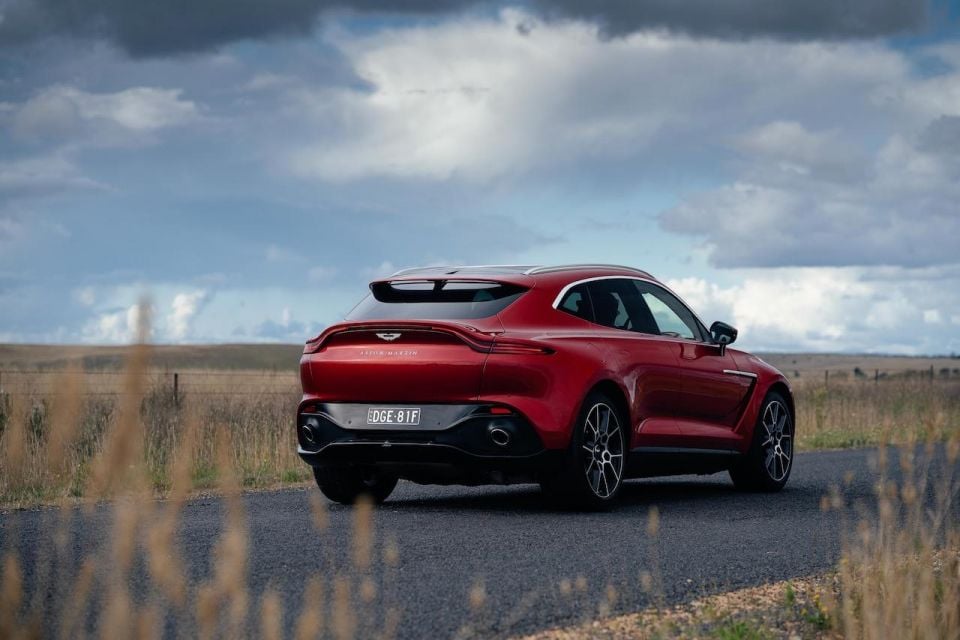

Senior Road Tester
New from
$357,000
excl. on-roads

Senior Road Tester
New from
$357,000
excl. on-roads


Senior Road Tester
New from
$357,000
excl. on-roads

Senior Road Tester
New from
$357,000
excl. on-roads
Quickly see how this car stacks up against its competition. Select any benchmark to see more details.
Where expert car reviews meet expert car buying – CarExpert gives you trusted advice, personalised service and real savings on your next new car.
Aston Martin was very late to the party with its first SUV, given Bentley, Rolls-Royce, and Lamborghini were already raking it in with their high-riding, ultra-fast luxury offerings long before the DBX’s launch party ever began.
Aston Martin will inevitably continue to design and build some of the world’s most beautiful sports cars, but that’s only possible if it can sell SUVs to a global market. Get ready for a whole range of DBX derivatives over the next few years, because the brand’s very survival depends on it.
No luxury car manufacturers operating today (except McLaren) can survive long-term without building an SUV. If you don’t build them, your rivals will.

Aston Martin is one of the world’s oldest car companies, having set up shop in the UK well over a century ago. Suffice to say it has legions of fans and aficionados the world over, many of them with an SUV parked next to their Aston Martin sports car in the garage.
With the DBX, Aston is hoping those same owners choose to keep it all in the family.
It needs to drive and handle like one of its sports cars, and provide loads of space, comfort, and relative off-road ability. It also needs to look bloody good. No easy task, even for Aston Martin.
Not only does the DBX get the largest grille in the brand’s history, it’s also the only such luxury SUV to use an entirely bespoke platform, which effectively means a ground-up design and build.
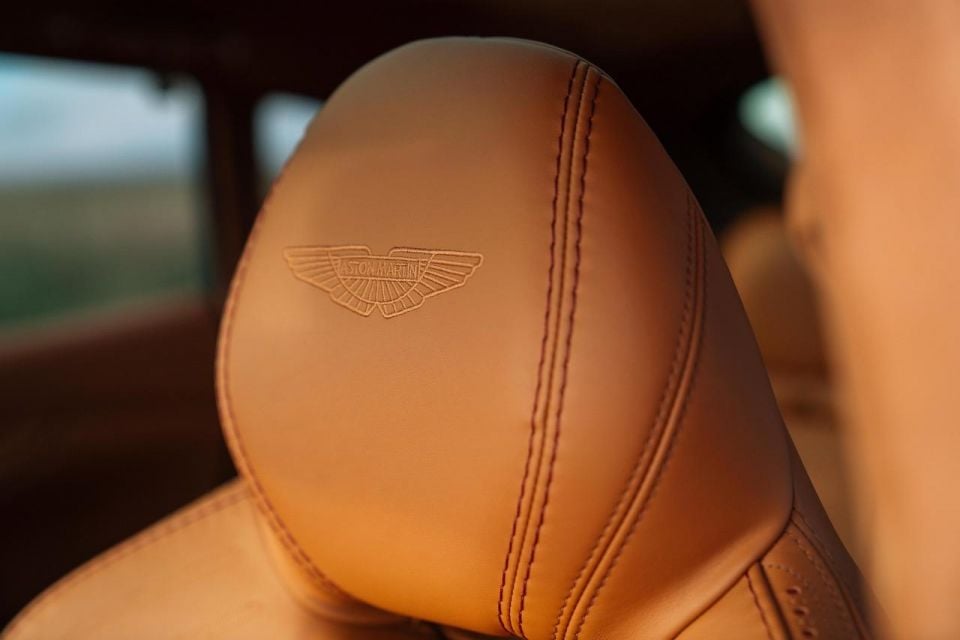
Just like other Aston Martin models, the DBX is constructed with bonded aluminium panels and extrusions in the interests of ultimate stiffness and handling – crucial if the Aston Martin is to go head-to-head with the likes of Bentley and Lamborghini, which happen to share the same platform.
It’s also got to appeal to women, especially in markets like the United States and China, where the male/female skew for Aston Martins in general is as high as 60/40, as opposed to 92/8 in the rest of the world.
The DBX and its future derivatives have the potential to shift that even more in favour of female buyers, not to mention the massive opportunities with current Aston Martin owners.
Is the car good enough to win them over?
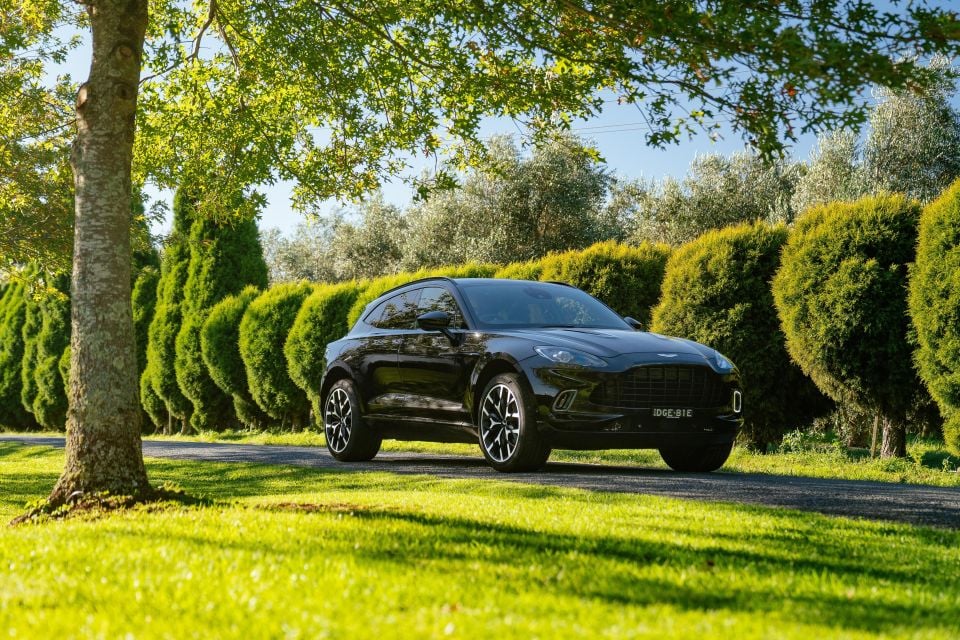
There’s only one very highly-specified trim, priced at $357,000 before on-road costs.
That puts the DBX in the same price bracket as the Bentley Bentayga V8 ($364,800) and Maserati Levante Trofeo ($330,000).
There’s also the monster Lamborghini Urus ($391,968) – or if you don’t mind an Audi badge the half-price RSQ8 ($208,500), which is effectively the same vehicle underneath.
Another alternative is the full-fat Range Rover P565 SVAutobiography Dynamic, priced from $351,068 excluding on-road costs.
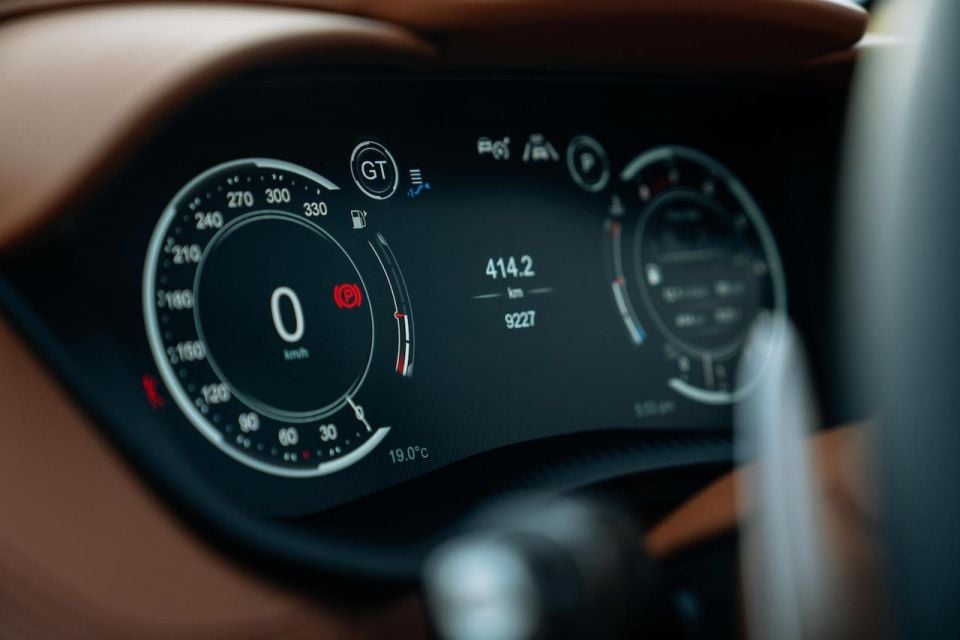
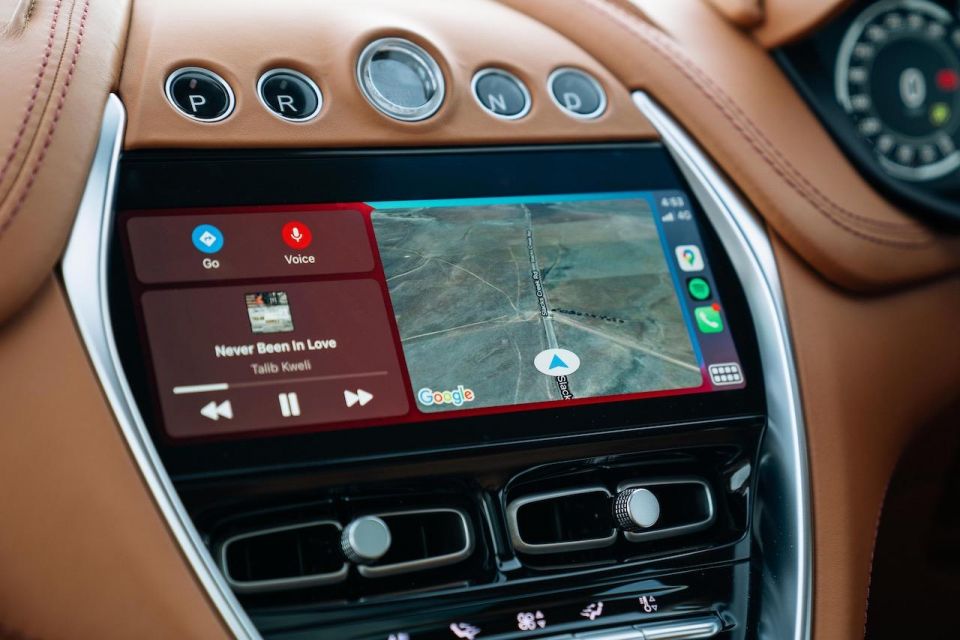
Buy your new car without the stress. It's fast, simple and completely free.

Great service from Travis and team, second time I have used this business would not hesitate to recommend them to anyone
Craig C.
Purchased a Ford Ranger in Sunshine Coast, QLD
CarExpert helped Craig save thousands on his Ford Ranger, now let us save you on your next new car.
Find a dealYou get one of the most exquisitely-crafted interiors in this rarefied segment using full-grain leather, sourced from long-term brand partner Bridge of Weir.
As you might imagine with a one-spec model, the list of standard equipment for the DBX is extensive, but big-ticket items include paint (Q by Aston Martin can literally match anything from your lipstick colour to that of your cufflinks – so the choice is infinite), acoustic laminated glass, a panoramic glass sunroof, power-folding heated exterior mirrors, bi-LED headlights with adaptive high-beam, and keyless entry and start.
Additionally, the DBX gets auto climate control, an auto-dimming rear-view mirror, configurable ambient lighting, a 10.25-inch infotainment system with Apple CarPlay, DAB digital radio, satellite navigation, a 12.3-inch digital instrument cluster, 14-speaker audio, 22-inch alloy wheels, an Alcantara headliner, a leather luggage blind, 12-way powered front seats, and a reversing camera with front and rear parking sensors.
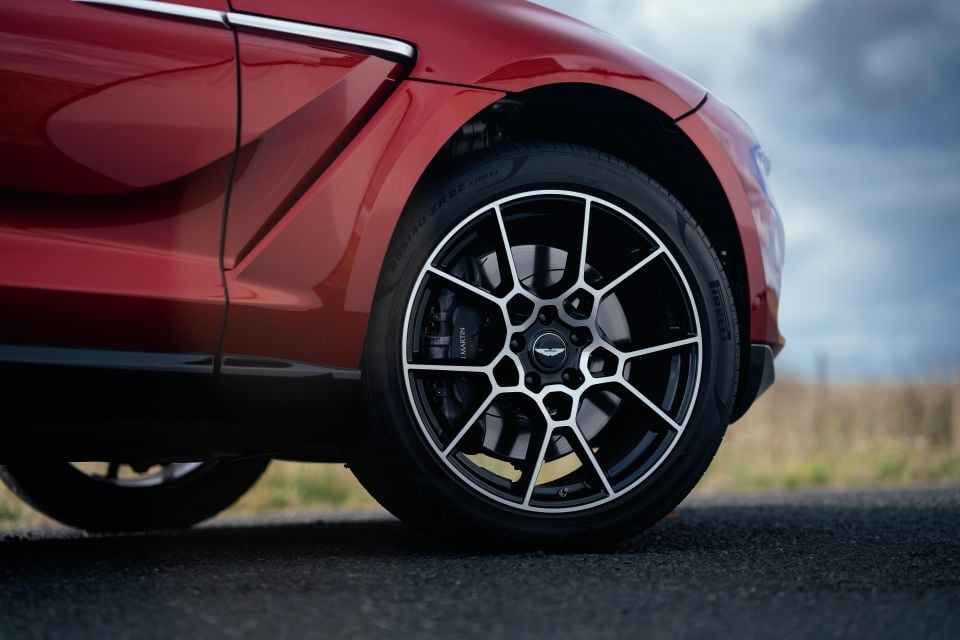
There’s also a powered tailgate, front and rear heated seats, Satin chrome pedals, a surround-view camera, rain-sensing wipers, and electric glovebox locking.
Generously equipped through the DBX may seem, there’s an endless inventory of optional extras for those with the means.
For example, our Morning Frost White car included ‘Special AML’ exterior paint, Aston Martin 800W Premium audio (still no familiar brand name), front and rear ventilated seats, leather-bound floor mats, red seatbelts, Aston Martin designer keys, dark chrome jewellery pack, 16-way driver’s seat, split-rim heated steering wheel, the DB elegance pack, Carbon packs (upper and lower), and solid walnut veneer.
Underneath the skin and specific to the DBX, there’s also an active centre transfer case, adaptive triple-chamber air suspension with adaptive damping, electric roll control, high-performance braking system, torque vectoring by braking, and an electric limited-slip rear differential.
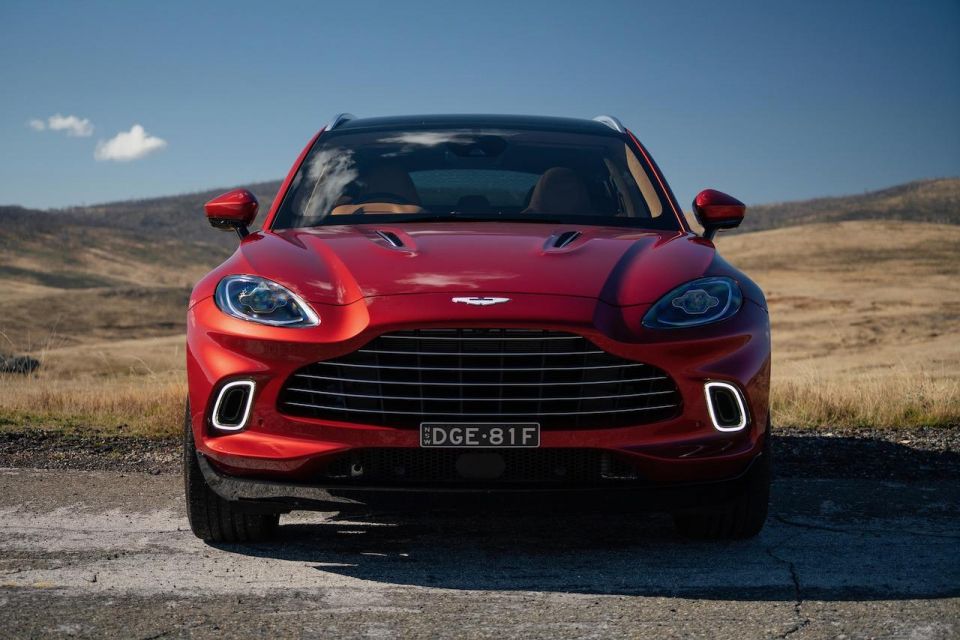
Cars with big price tags such as the DBX are rarely crash tested by ANCAP or Euro NCAP due to the sheer cost alone, but that doesn’t necessarily mean they aren’t safe.
The DBX has a raft of active safety systems as standard, including autonomous emergency braking, adaptive cruise control, lane-departure warning, lane keep assist, lane change warning, rear cross-traffic alert, blind-spot warning, with hill-descent control, nine airbags, and all-wheel drive.
While having the kit fitted doesn’t necessarily make a car ‘safe’, it certainly has all the ingredients to do so.
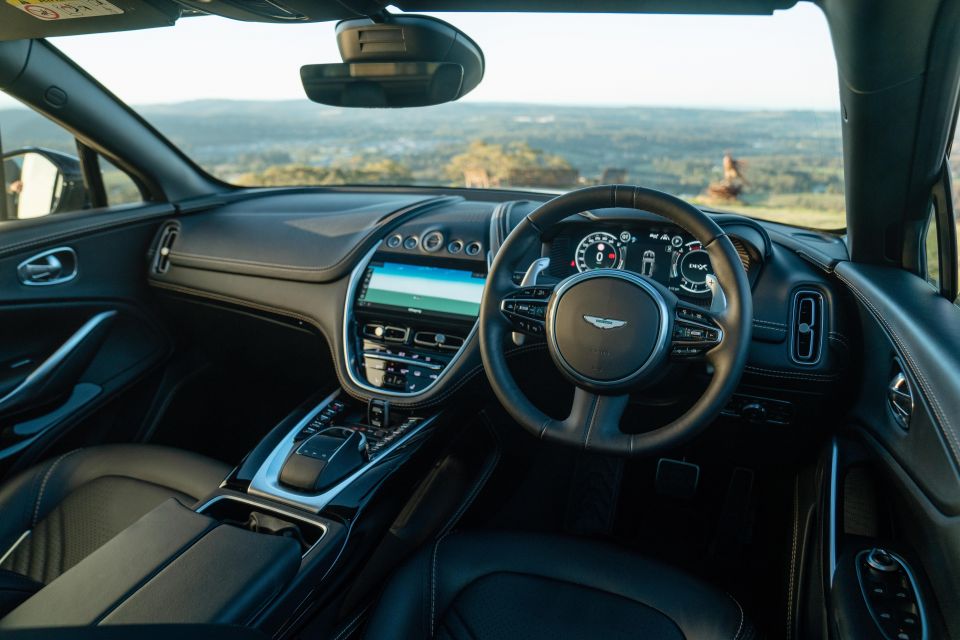
Climb aboard the DBX for the first time and you’re hit with the overwhelming ambience of pure craftsmanship. It’s the combination of superbly-finished leather and exquisite Alcantara from the headliner to the A-pillar that screams high-end luxury.
The cabin is also surprisingly cavernous for a vehicle just on five-metres in length. This is a proper five-seater, with comfort afforded to all passengers in both rows despite some of the most generously cushioned seats in the business.
The leather itself covers the entire dash from top to bottom, including the glovebox. There’s plenty of real metal accents, sculpted to follow the contours of the interior everywhere from the door trims to the centre console and steering wheel.
I’m not going to say it’s better or worse than the Bentley Bentayga, but it’s very high-end, especially with the added touch of Aston Martin’s trademark glass gear-selector buttons atop the dash.
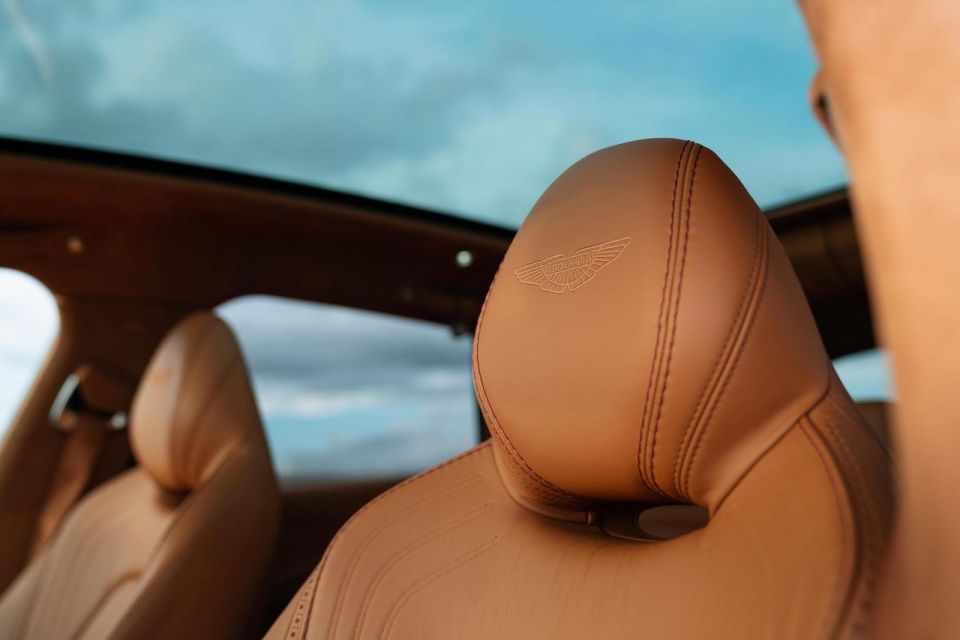

I’m not so sure about the infotainment system. Not so much with the clarity and resolution of the display itself (both are excellent), but for the fact it’s effectively been plucked from the Mercedes-Benz parts bin, and the only way to access the functions is to use a control wheel, or worse still, a trackpad.
It’s not a touchscreen, even though you get Apple CarPlay. Very annoying.
There’s a lot of piano black on the console, as well as a raft of shortcut buttons split between safety and drive mode functions. I actually don’t mind these, as they make life easier rather than having to scroll through multiple menus to turn off lane keeping assist, for example.
It might look smaller than the Bentley Bentayga thanks to its swooping roofline and lower profile, but at 5039mm long and 2220mm wide there’s almost nothing in it.
The full-length glass roof and frameless doors offer copious levels of glass for plenty of light and a feeling of space.
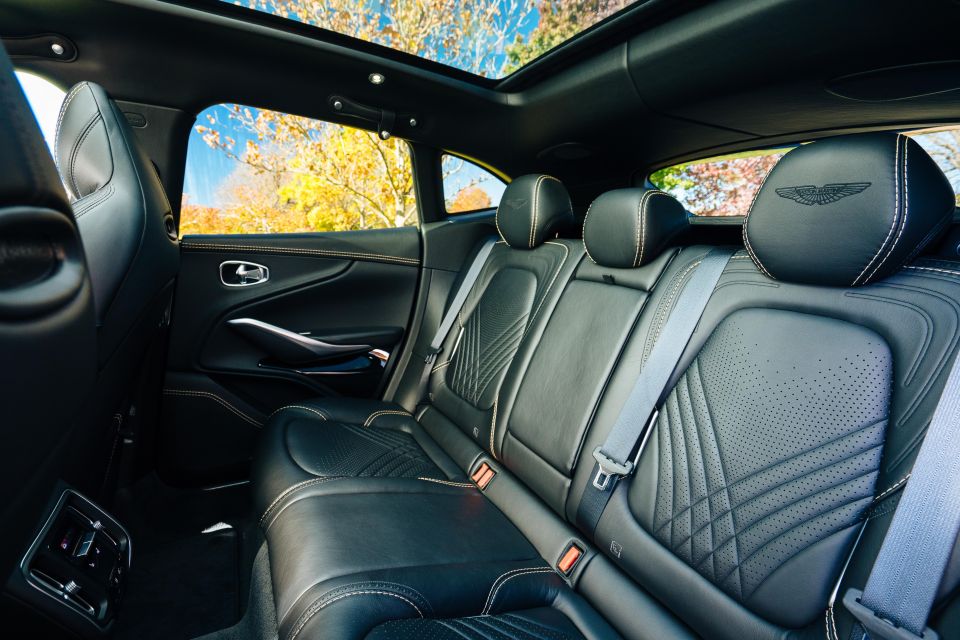

Interestingly, the real benchmark for passenger comfort in the DBX came from Marek Reichman, Aston’s chief creative officer, who stands 6’4” and wanted to be able to sit comfortably behind his own driving position.
Recommendations from existing Aston Martin owners were also sought during the development of DBX, as were suggestions from the brand’s Female Advisory Board, dealerships, and private focus groups.
The resulting information informed features such as the separate central armrests, glovebox design, and ergonomics of key control systems in the vehicle.
Boot space is a practical 632 litres behind the second row, but becomes a much larger area when the seats are lowered in their 40:20:40 split/fold combination.
By comparison, the Bentayga only has 484 litres, while the Lamborghini Urus provides a more useful space with its 616 litres.
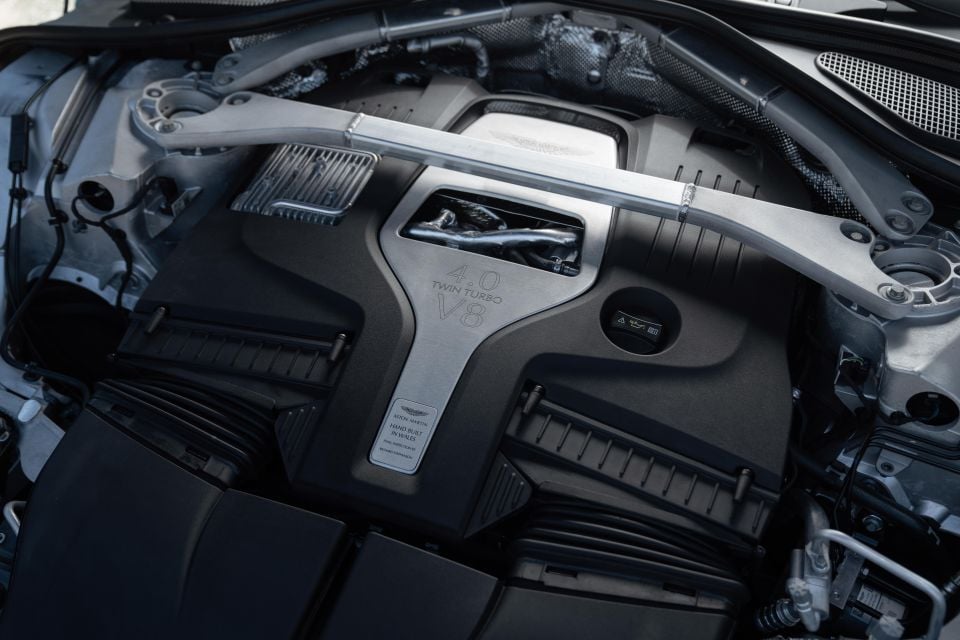
The Aston Martin DBX uses Mercedes-AMG’s M177 4.0-litre twin-turbocharged V8 petrol engine, which is also found in the DB11 and Vantage, making 405kW of power at 6500rpm and peak torque of 700Nm from 2200rpm.
It’s mated to a nine-speed torque converter automatic driving all four wheels, with an active transfer case and an electronic rear limited-slip differential.
At full throttle the DBX can go from 0-100km/h in 4.5 seconds, with a maximum speed of 291km/h, which matches the Bentley Bentayga V8.
The Lamborghini Urus gets a significantly more powerful twin-turbo V8 (478kW/850Nm), and needs just 3.6 seconds to cover the 100km/h dash.
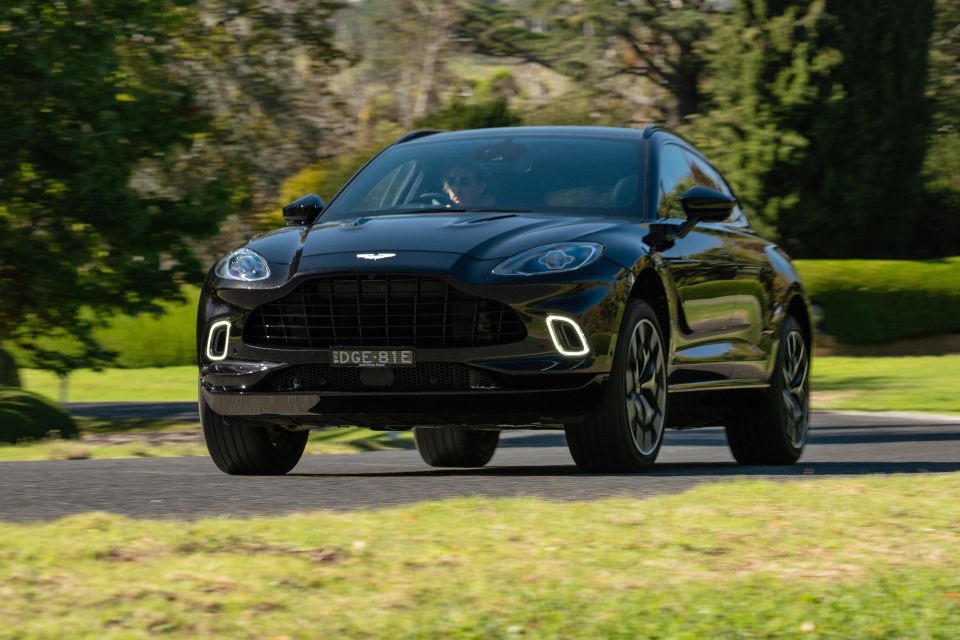
It’s odd, while driver’s seat itself is mounted low for the same kind of sporty feel you get in a DB11 or even a Vantage, you still feel like you’re perched exceedingly high above the traffic.
Right from the get-go the DBX feels surprisingly light on its feet, especially given its dimensions and 2.2-tonne heft. That’s a good thing, because we’re tackling some fast-flowing bendy sections on our way to the Southern Highlands in NSW.
It’s uncanny how sharp and agile the DBX feels across this kind of corner-infested terrain. You get the impression it might even perform well enough in a hill-climb event, such is the precision and feedback you get through the steering wheel.
You’re also keenly aware of exactly what the front tyres are doing and just how much grip is available at any given moment.
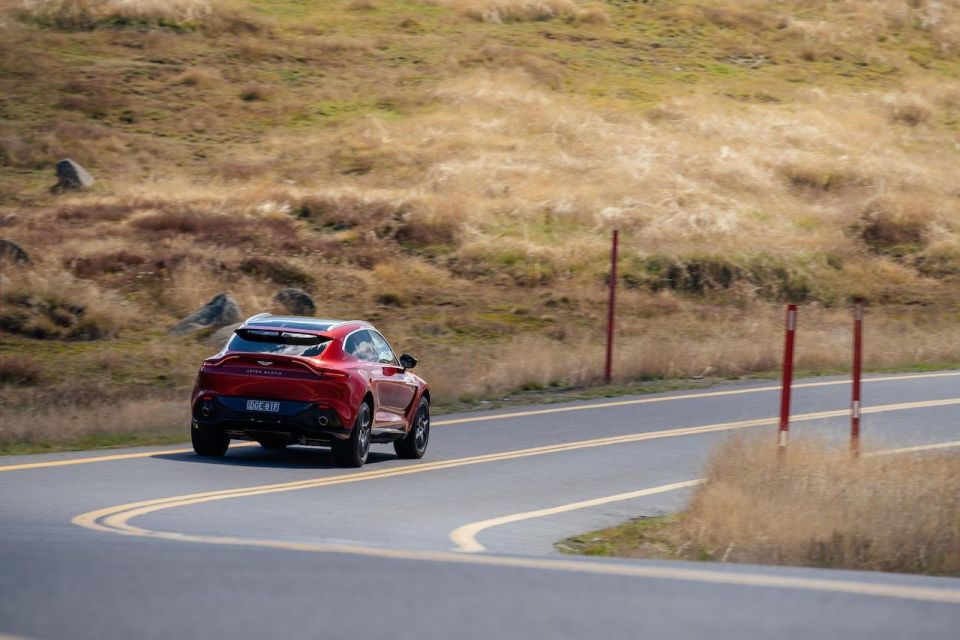
It’s a genuine delight to steer – perhaps unlike any SUV I’ve driven to date.
Matt Becker is Aston Martin’s chassis-tuning guru, but he learned his trade over 26 years at Lotus, before joining Aston Martin and starting work on the DBX.
The car has kit such as triple-chamber air suspension able to raise the ride by 45mm or lower it by 50mm, and an active anti-roll system capable of delivering up to 1400Nm per axle, thereby limiting body roll.
All of that is handled by the most powerful 48V electrical system in the business, along with a faster 14:1 steering ratio for that smaller car feel you get behind the wheel of the DBX.
You can also move roll stiffness up and down the length of the car depending on the drive mode, while the active centre differential varies the torque distribution in the same way, which is what makes the DBX feel so composed and predictable through the bends.
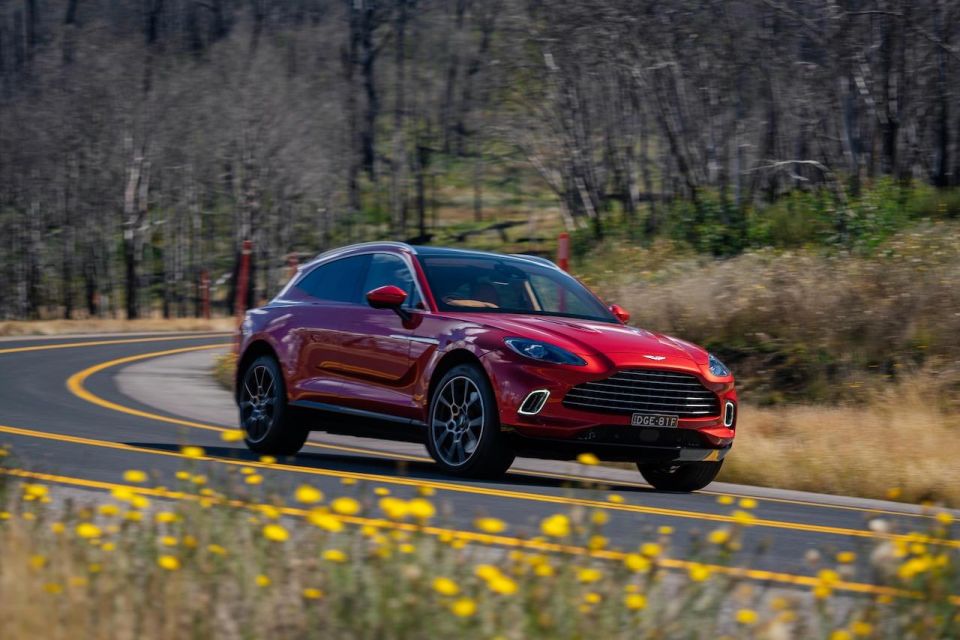
Where expert car reviews meet expert car buying – CarExpert gives you trusted advice, personalised service and real savings on your next new car.
Most of the time the car is rear-wheel drive, which is why it’s such a joy to drive. Allied to its sublime handling is the speed at which the Aston responds to even the smallest throttle inputs, but with a level of linearity that belies the fact it uses twin turbochargers. There’s no discernible lag across most of the rev range.
And, don’t worry about the fact that DBX is nearly a second slower than the Urus to 100km/h because this is still a very fast SUV, with seemingly limitless levels of thrust available at any given time.
There are six drive modes available for the DBX including Individual, which allows drivers to tune the chassis, steering, engine, gearbox and exhaust. And folks, this is one of the best-sounding SUVs on the planet.
Overall, ride comfort is compliant, though even in the most forgiving mode it’s a tad sharper than I expected. Most of the surfaces we encountered on test were coarse-chip and not particularly well maintained.

The DBX is also off-road capable, with two Terrain modes. In the more extreme Plus setting, the system raises the vehicle by 50mm.
Unfortunately, we were about to test it down a steep, grassy ravine, before an all-wheel drive ute there to test conditions lost all traction and slid to the bottom due to heavy rain at the time, which meant it was decided not to proceed.
That said, the slippery, muddy trail we were on was an off-road test in itself, especially on the Pirelli P Zero road tyres fitted to our press cars.
For those wanting to tow, the DBX can pull up to 2700kg, though both the Range Rover and Bentayga trump it with a 3500kg capacity.
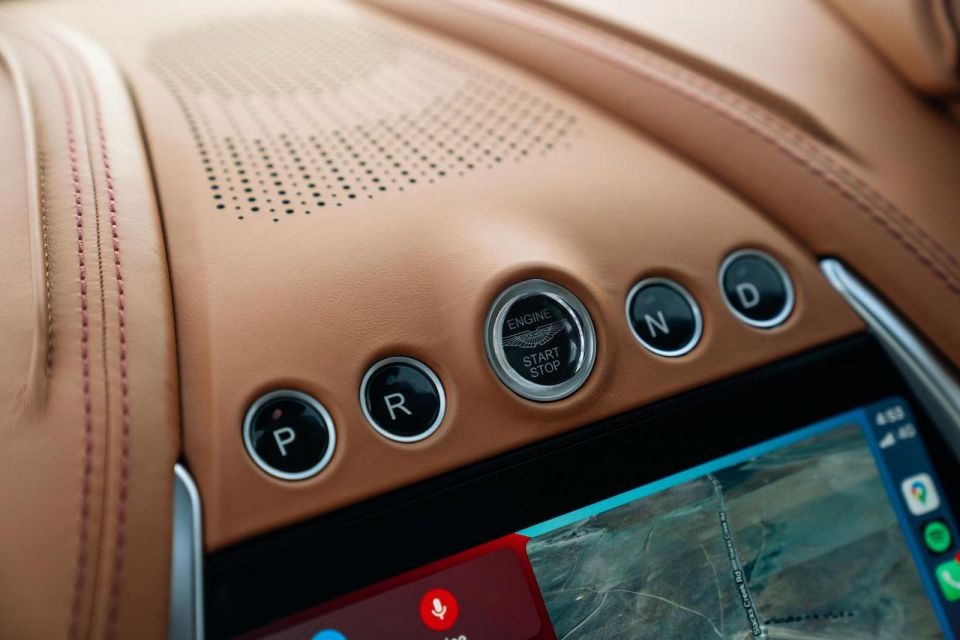
Aston Martin offers a three-year, unlimited-kilometre warranty for the DBX with 24-hour roadside assistance.
Service intervals are 12 months or every 10,000kms.
Claimed fuel consumption is 14.3L/100km on a combined cycle, but we saw well over 20L/100km on our launch route, which wasn’t surprising given the conditions.
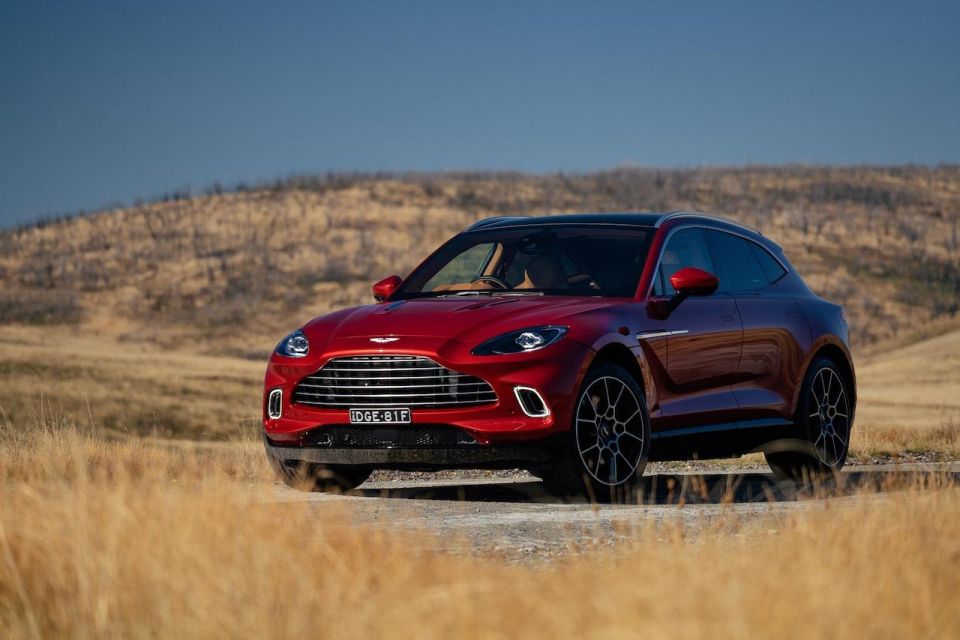
Owners will likely expect a lot of their DBX, and they’re unlikely to be disappointed.
While Aston Martin has delivered all the space, luxury, tech and safety requirements of a high-end, high-priced SUV these days, it’s also produced a high-rider that feels supremely capable in the bends.
It’s perhaps more driver-focused and more enjoyable to pilot than any of its rivals.
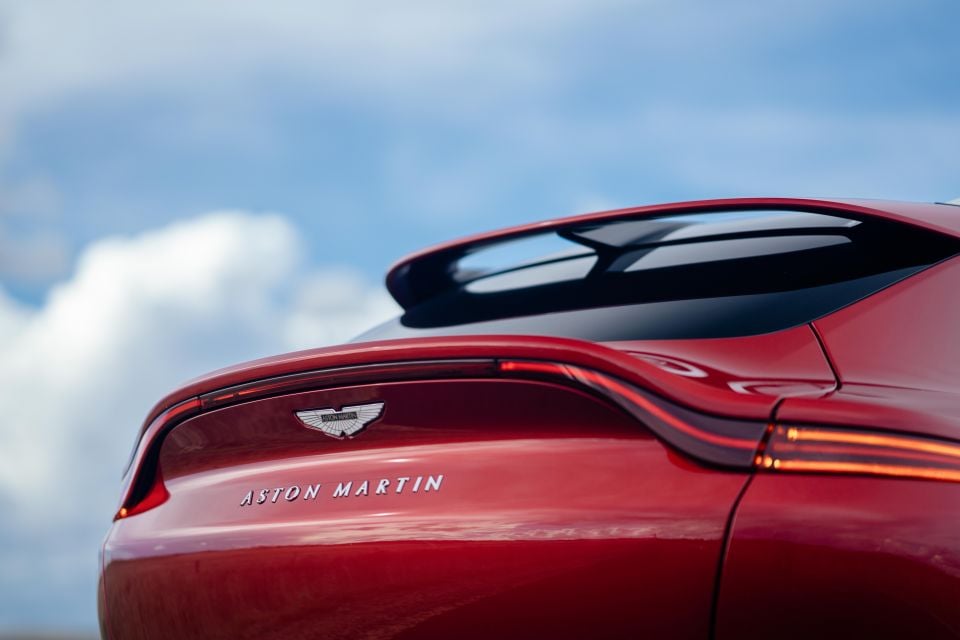
Click the images for the full gallery
Where expert car reviews meet expert car buying – CarExpert gives you trusted advice, personalised service and real savings on your next new car.
Anthony Crawford is a CarExpert co-founder and senior presenter with 20+years in automotive journalism and content creation.


Max Davies
3 Hours Ago


William Stopford
19 Hours Ago


Ben Zachariah
20 Hours Ago


Derek Fung
20 Hours Ago


Matt Campbell
1 Day Ago


William Stopford
2 Days Ago